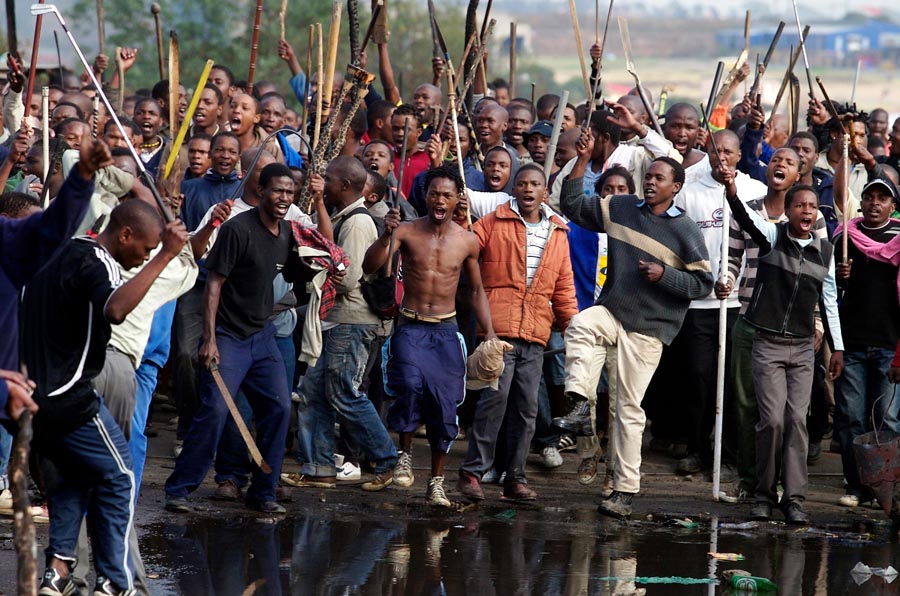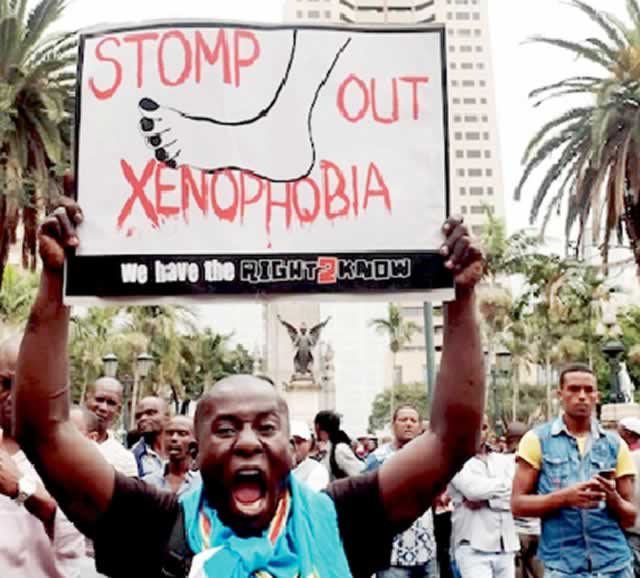SA: What drives black anger?

Moeletsi Mbeki Correspondent
South Africa’s liberation has done little to unite a nation divided more than ever by economics.
The fact that the white population in South Africa retained its wealth after the introduction of democracy in 1994 has been a driver of much anger in certain black circles. However, these are not the only circles angry with the outcomes of a liberated South Africa.
Another driver of anger in another black circle is the rapid growth of the black super-rich who, only a few years ago, were the leaders in the fight against apartheid. They are the beneficiaries of the ANC government’s get-rich-quick schemes — black economic empowerment and affirmative action in public sector employment — developed to benefit its leaders, their families and favoured insiders.
The third and more potent driver of anger in yet another circle of blacks is government policies that have led to South Africa’s de-industrialisation, rising unemployment, and incompetent and corruption-ridden service delivery to the black poor.
It is not just the different black circles that are angry; there are circles of white South Africans who are also angry.
With so much anger in the country, South Africa, according to some observers, is a pile of dry leaves and twigs waiting to ignite and start a conflagration that will usher in a revolution.
To the country’s leading revolutionaries — Julius Malema, Liv Shange and Irvin Jim, to name but a few — South Africa is ripe for a black socialist revolution. Even to black reformists who are now sitting pretty — Jacob Zuma and the ANC leadership — South Africa is ripe for another change called the “second transition”.
Can white South Africans do something to placate black anger?
The accomplished American student of international relations Henry Kissinger told the Egyptians something significant at the start of negotiations to end their war with Israel in October 1973.
He advised the Egyptians not to expect to win at the negotiating table what they had lost on the battlefield.
For 30 years — from 1960 to 1990 — leading organisations, which were supported by most black South Africans and Africans on the continent through the Organisation of African Unity, the ANC and the Pan Africanist Congress (PAC), waged a war against the white National Party government. Each side inflicted casualties on the other.
However, at no stage were the black liberation movements able to liberate a single square metre of territory from the apartheid regime.
The purpose of war is to forcibly evict one’s enemy from territory or part of a territory and take over that conquered territory, as well as the population resident on it, and establish a new administration.
That new administration must be able to administer the territory in line with the objectives of the liberation movement. This never happened in South Africa during the period of the armed struggle.
A great deal has been said by leaders of the ANC and PAC about their achievements in the struggle against the apartheid regime. In 1990, the ANC admitted it never got anywhere towards liberating territory in South Africa. The ANC thus quietly redefined its former armed struggle as merely armed propaganda.
Kissinger’s advice to the Egyptians applies in equal measure to black South Africans who wish to dictate “conditions of surrender” to white South Africans 21 years after the end of apartheid. One can only dictate to an adversary who has been defeated militarily.
Neither the ANC nor the PAC waged a war with the intention of defeating the white government.
The purpose of the liberation struggle was always to fight for the incorporation of black people into the state and economic institutions of capitalist South Africa.
These were the institutions that were established by the British between 1854, when the Cape non-racial constitution was implemented, and 1902, when the Boer republics were crushed by the British army in a real war and South Africa’s current capitalist system was consolidated by the administration established over the Boer republics by Sir Alfred Milner.
The question then is: Have the black liberation movements achieved their objectives of incorporation into South Africa’s capitalist system? The answer to this question is most certainly yes.
The second question: Who among the blacks has been incorporated into South Africa’s capitalist system?
The mass of black people were incorporated into South Africa’s capitalist system centuries before 1994.
The coloured people were incorporated as slaves as far back as 1657; the Indians as sugar plantation workers as far back as 1860; and the Africans as farm labourers, domestic workers and miners since the early to mid-19th century.
Very little has changed since their initial incorporation in the status of coloured, Indian and African workers.
What has changed fundamentally is the position of what I will call the black political elite.
These were the black professionals who led the struggles since the middle of the 19th century against their exclusion on racial grounds from the benefits of South Africa’s capitalist society.
The struggle for incorporation of the black political elite has now been won, not militarily, but through elections that were agreed to by representatives of the whites. The black political elite now control the South African government.
This elite uses its control of the state to derive a multiplicity of benefits to itself that are allowed under the Constitution — and sometimes are not allowed.
The Constitution does not give the new political elite powers to decide how white or, for that matter, black South Africans should live, or what they should think.
The Constitution defines what the rights of citizens are, how they should be enforced, how government should be constituted and how it should operate. This sounds simple, but it is often misunderstood by many politicians and political analysts who imagine politicians have all sorts of powers which, in reality, they do not have.
The Constitution does empower the black political elite to crush by force those who threaten its benefits, which it enjoys in partnership with the mainly white economic elite. By the way, not all whites are members of the white economic elite; many are just the employees of this elite.
There were no whites in the command structure that crushed the Lonmin striking mine workers at Marikana in 2012.
This command structure included Cyril Ramaphosa in Lonmin’s boardroom, then police minister Nathi Mthethwa, then mining minister Susan Shabangu, national police commissioner Riah Phiyega and the SA Police Service field commanders who ordered mortuary vans as essential equipment for “crowd control” on August 16 of that year.
What all of this tells us is that there are no inherent contradictions between black and white South Africans.
The most important dynamic in South Africa today is the emergence and rapid growth of social differentiation among blacks, and the incorporation of the black political elite into the top echelons of the economic and social system inherited in 1994.
However, this dynamic also drives the growing conflicts between the haves and the have-nots in the country. The have-nots remain largely the ordinary black workers who remain poor, as they have for centuries, but the haves today represent the truly non-racial, non-sexist, democratic aspect of South Africa.
Where will this dynamic of the haves versus the have-nots lead South Africa to? The short answer is: it’s too early to tell. — City Press.










Comments